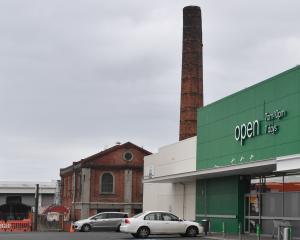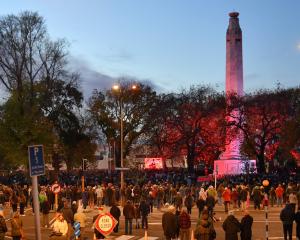When considering the brightest jewels in Otago's crown there are several perennial nominees: Queenstown's verve and attractions, Otago Peninsula's access and wildlife, Wanaka's beauty and winter pursuits.
Would Cromwell readily spring to mind?
The furthest New Zealand town from the sea has, for decades, struggled to be noticed against the giant strides made by its neighbours, Queenstown and Wanaka.
Cromwell hasn't always played second fiddle.
Originally known as the Junction, the town boomed after gold was discovered there in 1862.
In 1921, the rail line from Dunedin reached its terminus in Cromwell and as the gold rush died the town transformed into the area's key service centre, supporting a large horticultural industry.
But the Clyde Dam changed the town.
A poster child for then Prime Minister Robert Muldoon's ‘‘Think Big'' policies, construction began in 1982 and ran for 11 years.
The dam was commissioned in 1992 and Lake Dunstan was filled over a year-long process from that April.
The rising water buried the Cromwell Gorge and the postcard-perfect heritage attractions strewn along its length.
It buried the town's bridge and it buried a large portion of the town itself.
While a new town and facilities were built, practical and convenient, the historic character was largely lost.
As the region's tourist industry has continued to leverage Otago's gold-mining history in recent years it seems fair to assume the Cromwell Gorge, had it not been flooded, would have become one of the jewels in Otago's crown.
But while Lake Dunstan drowned so much potential, it also brought a guaranteed source of irrigation, something that has contributed to the area's stonefruit and grape-growing success.
In place of tourism, the town turned to industry and is now in the midst of a revival on the back of factors more permanent than the flash of gold in a tin pan.
A February 13 ODT report showed the town's population of 4143 had increased by 558 people, or 15.6%, since 2006.
Local leaders said the area's wine, fruit and tourism industries were thriving.
Central Otago Mayor Tony Lepper said while Cromwell had gained from its location between Queenstown and Wanaka, it had now built its own momentum.
On February 18 another report highlighted the town's weather, with its mean daily maximum temperature of 26degC leaving it the country's hottest locality, on average, since the start of December.
Cromwell had also recorded the country's highest temperature over that same period - a sweltering 34.5degC.
On March 2, the ODT reported those behind a planned 700-bed housing development in Cromwell were preparing to file for resource consents for the project.
If completed as planned, the development would alleviate the town's acute need for seasonal worker accommodation and offer affordable rental options for locals.
Meanwhile, the $20 million Highlands Motorsport Park, opened in 2013, continues to bring attention, visitors and work to the town (and there are even hopes of securing a Hollywood movie deal using the venue), while Cromwell's burgeoning wine industry is showing no sign of stalling.
With location, weather, popular neighbours and economic growth, there is a solid foundation for optimism.
And this from a town drowned for power-generation purposes just two decades ago.
Otago is a geographically-huge region.
Its land can be hard, its sole city is small and its population is sparse, a problem as healthcare, education, roading, policing and other core services forever grow more expensive.
When one part of Otago succeeds, the whole province benefits.
Our crown can never have too many jewels.
The hard work, endeavour, dedication and vision of those who have championed Cromwell for the past two decades should be acknowledged and celebrated by all in Otago.












